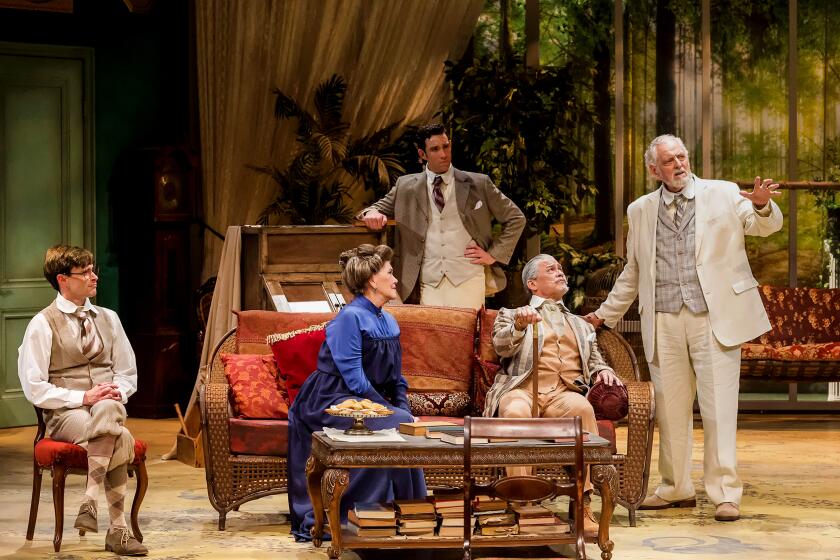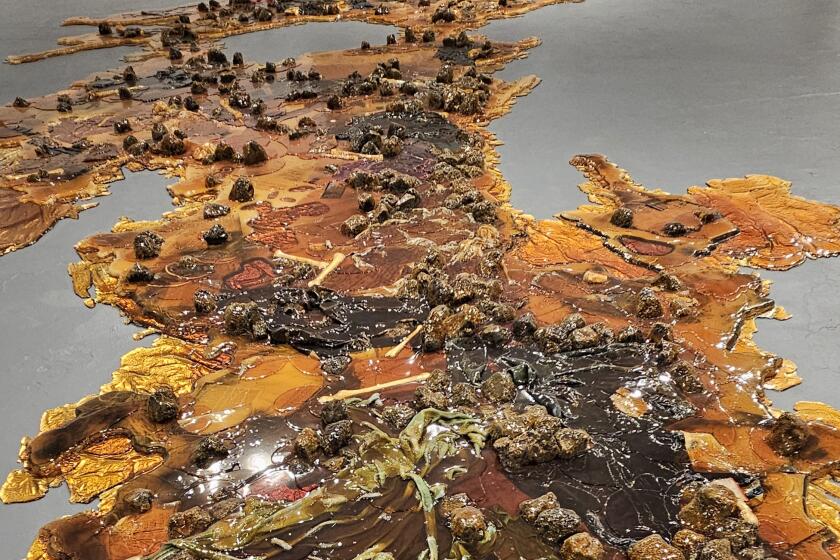Fit for princes, now shared with the public
JOHN BUCHANAN can hardly contain his enthusiasm as he gazes at a 16th century Madonna painting by Hans Holbein the Younger, hanging alone in all of its Renaissance glory on a wall at the Portland Art Museum.
It is the first time that the masterpiece “The Madonna With Basel Mayor Jakob Meyer and His Family” has left European soil. The museum’s executive director gushes over how the Madonna’s cloak hangs protectively over Meyer and his kin, about fine details in the carpet upon which the Meyers are kneeling, and over the way the painting famously weds the realistic Northern European style with the softer, Italian “sfumato” technique seen in paintings such as “Mona Lisa.”
“It is a transformative experience in every little detail. Mesmerizing,” says Buchanan, a dapper 52-year-old in a blue suit.
Americans may well have been disappointed three years ago when the Hesse family’s hopes of selling the Holbein painting to the J. Paul Getty Museum in Los Angeles were blocked by German authorities because it is on a list of “nonexportable national treasures.”
But America has the Holbein Madonna now -- at least until March 19.
It is the star of an exhibition of 400 pieces of art on loan to the Portland Art Museum from the Hesse family, who have one of the largest and grandest private art collections in all of Germany. The exhibition, which opened Oct. 29, is called “Hesse: A Princely German Collection.”
Considering what it’s been through, it’s a miracle the Holbein painting is still in one piece.
During World War II, it was transported from Darmstadt east to Silesia to keep it safe. As Russian Red Army soldiers advanced through Silesia in February 1945, the painting was again loaded up and transported westward. En route, it narrowly escaped the firebombing of Dresden.
On a snowy night in December 1945, the 19-year-old Moritz of Hesse was sent by his uncle, Prince Ludwig, to retrieve the painting from Coburg Castle, accompanied by an American officer whose job it was to find works of art that went missing during the war.
After removing the painting from Coburg Castle’s dungeon, Moritz and the American officer packed it into an Army truck and headed for the Hesse family’s Schloss Wolfsgarten palace. The truck caught fire. Fire extinguishers on Jeeps that passed by didn’t work.
“We finally suffocated the flames with sand and earth, and I was able to bring the family treasure to Schloss Wolfsgarten intact,” Moritz, now the Landgrave of Hesse, wrote in a foreword to the exhibition catalog.
The Holbein painting is entwined with German and European history. So are all the art pieces on display at the Portland Art Museum, which were collected by the Hesse dynasty during five centuries.
Germany was once a hodgepodge of states and independent cities run by kings, princes, dukes and landgraves. After the Thirty Years’ War, the 1648 Treaty of Westphalia recognized more than 300 sovereign German states. The Hesse dynasty traces its roots to the 13th century. And over the following centuries it expanded its territories, influence and wealth through war, by building alliances, leasing its well-trained soldiers out to allies such as England and by marrying into royalty in other countries.
Buchanan traveled to the Hesse family’s castles to select the objects on display here. Diamond tiaras. Gilded drinking cups from the 1500s. Tiered table fountains from the 1600s that once poured wine from one level into water from another -- possibly to keep the lid on drunkenness during court parties. Furniture. Candelabra. Jewelry. A gilded carriage.
And surveying all of this splendor, from portraits on the exhibition’s walls, are the powerful and well-heeled ancestors of the collection’s current owners.
More to Read
The biggest entertainment stories
Get our big stories about Hollywood, film, television, music, arts, culture and more right in your inbox as soon as they publish.
You may occasionally receive promotional content from the Los Angeles Times.






